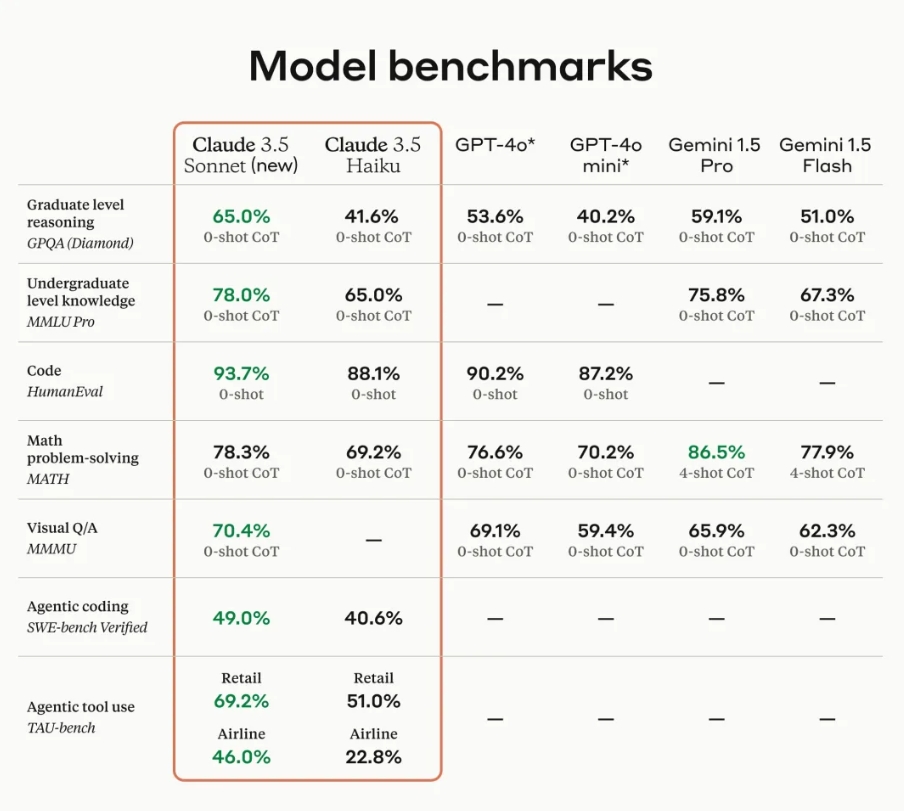Anthropic AI has released the Claude 3.5 series, including two new models, Claude 3.5 Sonnet and Claude 3.5 Haiku, and launched the revolutionary "Computer use" function, marking the arrival of a new era of AI operating systems. This upgrade has significantly improved reasoning capabilities, performance efficiency, and human-computer interaction. The reasoning capabilities of Claude 3.5 Sonnet even surpass OpenAI's o1 model. The editor of Downcodes will take you to have an in-depth understanding of the breakthroughs and innovations of the Claude 3.5 series.
Early this morning, Anthropic AI Company launched the Claude3.5 series, including the upgraded version Claude3.5Sonnet and the new model Claude3.5Haiku. These two new versions have significant improvements in functionality and performance.
Also launched is a revolutionary new feature - Computer use. It is reported that the Computer use function allows developers to use the API to let Claude use the computer like a human, performing operations such as controlling the mouse and keyboard, including viewing the screen, moving the cursor, clicking buttons, and entering text. This marks that we have officially entered a new era of AI operating systems.
The director of developer relations at Anthropic AI emphasized that computer usage capabilities are the new basic capabilities that AI models should have and are also the new direction for human-computer interaction in the future. Although this feature is still in the experimental stage, it has already shown its potential in performing complex tasks.

Among them, Claude3.5Sonnet has surpassed OpenAI's o1 in reasoning capabilities and has become the strongest reasoning model currently. In addition, Claude3.5Sonnet also achieved remarkable results in the OSWorld test. Although there is still a gap between human performance and performance, its ability to interact multiple times shows great potential and room for improvement.

Claude3.5Haiku has also significantly improved its reasoning efficiency and performance. Its score on encoding tasks surpasses many publicly available state-of-the-art models, including the original Claude3.5Sonnet and GPT-4o. Claude3.5Haiku's low-latency reasoning capabilities enable it to quickly respond to user instructions and improve work efficiency. It is especially suitable for scenarios that require real-time interaction.
In addition, the pricing strategy of the Claude3.5 series also shows competitiveness, and costs can be significantly reduced through intelligent caching technology and batch processing APIs.
The launch of the Claude3.5 series is not only a major breakthrough for Anthropic AI in the field of AI, but also points out a new direction for the development of the entire industry. With the continuous advancement of technology, AI will be more powerful in operating computers in the future, bringing more possibilities to human society.
The release of the Claude 3.5 series heralds that artificial intelligence technology is reaching a new milestone, and its "Computer use" function provides unlimited possibilities for future human-computer interaction. We look forward to AI technology bringing us more conveniences and surprises in the future!